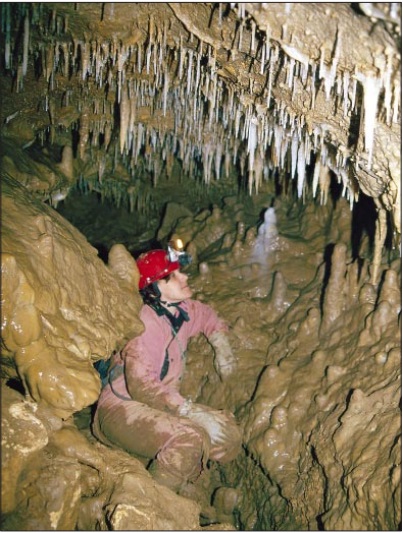Osovniška jama, the Cave in Isolated Karst in the East of Slovenia
DOI:
https://doi.org/10.3986/ac.v31i3.380Abstract
Osovniška jama je bila odkrita leta 2001 med izkoriščanjem srednjemiocenskega apnenca v kamnolomu Pijevci v vzhodnem delu Slovenije. Subpanonski osameli kras je značilen za ta del Slovenije. Ta kras je razvit na majhnih otokih plitvega apnenca. Subpanonski osameli kras je poseben tip krasa na litotamnijski apnencih, kjer so površinske oblike dobro razvite ni pa znanih daljših jam. Osovniška jama je dolga okrog 290 m in je sedaj najdaljša jama v temu delu Slovenije. Na tem področju vpadajo apnenčeve plasti generalno proti JV pod kotom 20°. Glavne tektonske strukture so v smereh SZ-JV in V-Z. V kamnolomu je grebenski apnenec masiven in razpokan v smereh V-Z, SZ-JV in S-J. Jama generalno sledi smeri SZ-JV. Oblika rovov še zmeraj kaže na oblikovanje v freatičnih pogojih; večinoma pa je izraženo preoblikovanje in oblikovanje rovov v vadozni coni. V nekem obdobju razvoja jame so alohtoni klastični sedimenti napolnjevali zgornje dele jame, kasneje pa so bili skoraj popolnoma izprani. V jami je veliko kapniških tvorb.
Osovniška jama has been discovered in 2001 during the exploitation of the Middle Miocene limestone in Pijevci quarry in the E part of Slovenia. Isolated subpanonian karst is typical of this part of Slovenia. This karst developed on small isolated patches of shallow limestone. Subpanonian isolated karst is a special type of karst on Lithothamnian limestone, where the surface karst forms are very well developed but no long caves were known. Osovni¹ka jama is about 290 m long and now is the longest cave in this part of Slovenia. In this area the general dip of limestone beds is towards SE at dip angle 20°. The main tectonic structures of the area are in NW-SE and E-W directions. In the quarry, reef limestone is massive and fissured in E-W, NW-SE and N-S directions. The cave generally follows the NW-SE direction. The shape of channels still shows its formation in phreatic conditions; but mostly the transformation and formation of its channels in the vadose zone is expressed. At some time in this cave development allochtonous clastic sediments filled up the upper parts of the cave; afterwards they were almost entirely washed away. There are a lot of flowstone formations in this cave.
Downloads

Downloads
Published
How to Cite
Issue
Section
License
Authors guarantee that the work is their own original creation and does not infringe any statutory or common-law copyright or any proprietary right of any third party. In case of claims by third parties, authors commit their self to defend the interests of the publisher, and shall cover any potential costs.
More in: Submission chapter




